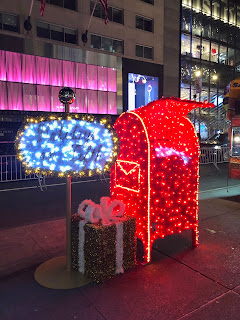MOUNT PLEASANT: Lilliputian Train Station
Known as the "Cemetery Stop"
My parents and grandmother are buried in Gate of Heaven Cemetery in Hawthorne, New York. It is thirty miles to Mount Pleasant, the stop of Gate of Heaven, via Metro-North's Harlem line from Grand Central Terminal. The off-peak trip runs express and takes 45 minutes. The ride is smooth but verifying the schedule to Mount Pleasant is not. The stop is not on Metro-North's printed or online schedules.
Once at the ticket window I asked the clerk for a round trip ticket to Mount Pleasant. She paused and whispered, "Mount Pleasant"? I replied, "the cemetery." She said "Oh yeah. The cemetery stop." Another time at the information kiosk I asked "What time does the train leave Mount Pleasant?" He chuckled and said "12:52 and you better not miss it." On weekdays, the train stops once a day in each direction and three times on weekends.
 |
| Gravestone company next to north platform |
Built in 1913, Grand Central is a magnificent Beaux-Arts building. Hundreds of thousands of people pass through it, one of the city's most cherished landmarks, daily. The four-sided opal glass clock on top of the majestic information booth is valued between 10 to 20 million dollars. Grand Central is the second busiest train station in the country after NY's Penn Station. It has 44 platforms and 67 tracks on two levels. It is home to the Metro-North Railroad and serves riders heading to upstate New York and Connecticut on it Hudson, Harlem and New Haven Lines. The new LIRR Grand Central Madison Avenue stops 100 feet beneath the terminal's main floor. Five Subway lines stop here.
Of course the station is unique due to its size. What fascinates me is the train engineer's technique to stop the eight car train at the precise spot on the platform so passengers may enter and exit the trains. One time when I arrived at the station the train missed the platform completely. I stood at the door and wondered "What now?" The conductor summoned the engineer who backed up the train until the door aligned with the platform.
 |
| Engineer checks for proper spot to stop train |
| Over the years I have made about 40 round trips. Only one time, on my return to Grand Central, did I ever share a platform with another rider. |
THE END







































